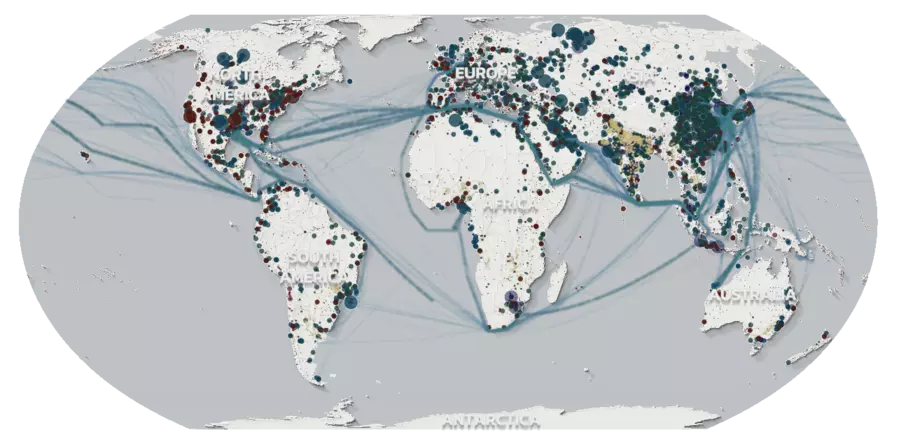The 2022 UN Loss and Damage Fund is Terrific News—Now Who Will Foot the Bill?
One of the big takeaways of the 2022 United Nations Climate Change Conference (COP27) was the endorsement of a Loss and Damage Fund. It assigns financial liability to big polluters (wealthy countries) to cover the costs of climate-induced damage in poorer countries. But just how effective will this open-ended policy be? Not very, is the most probable answer.
The Loss and Damage Fund is meant to hold wealthy countries financially accountable for climate-related disasters in impoverished nations. However, with critical issues yet to be addressed—such as who will pay and how much—it is unlikely to have a significant positive impact anytime soon.
Money and Climate Change
What is the Loss and Damage Fund?
‘Loss and Damage’ has long been on the climate change agenda—UN member states have been keen on implementing compensation policies for climate-induced disasters from as early as 1991. Such financial support is necessary because developing countries are often hit the hardest, despite contributing the least in terms of pollutants and global warming emissions.
At the 2022 UN Climate Change Conference (COP27 for short), the Loss and Damage fund was finally endorsed, after several days of tough negotiations, to provide funds to “communities particularly vulnerable to the adverse effects of climate change.”
You can read the draft document here.
How Loss and Damage Will Work
Developed countries would contribute to the fund, which covers various environmental disasters, such as damage caused by floods, famines/droughts and other extreme events in developing countries.
As newer technologies enable us to track emission sources accurately, we are in a better position to pinpoint specific polluters and hold them accountable. Rightly so, as most of the major polluters and emitters are wealthy nations with thriving industries.

In theory, the Loss and Damage fund will have a two-fold positive effect:
- Provides reparations to vulnerable developing countries for climate-related damages
- Places further pressure on wealthy nations to control emissions, slowing climate change
First-Mover Disadvantage in Climate Finance
In reality, the Loss and Damage Fund is unlikely to help developing nations or fight climate change anytime soon. For starters, wealthy countries have yet to assume financial responsibility for climate change, let alone address the issue of direct reparations for climate-induced damage.
Any mention of climate finance—managing climate change through financial means—is enough to send governments and corporations running for the hills. Despite a breakthrough agreement to mitigate climate effects through financing in the 2015 Conference (COP21), global investment is still well short of the ‘US$100 billion yearly by 2020’ target.
To compound the dire state of climate finance, many of these ‘investments’ are in the form of loans, enabling governments and institutions to fulfill these targets with little financial risk. Oxfam estimates that US$60 billion was loaned to poorer countries for climate-related problems in 2018 alone, driving them into further debt.
Other climate finance investments have the prospect of returns down the line; renewable energy infrastructure and projects have the potential to attract further investors. Direct reparations to developing countries present limitless liability with no such upside.
You can see how the Loss and Damage fund will inevitably become the least attractive of all the climate finance initiatives. At COP26 in 2021, a Bangladeshi consultant remarked, “The term ‘Loss and Damage’ is a euphemism for terms we are not allowed to use; Liability, Compensation and Reparations.”
Key Problems with the Loss and Damage Fund
Splitting the Climate Change Bill
One of the main challenges the fund needs to overcome is the assignment of responsibility (read: the bill). With no direction and precedent, it’s like playing ‘pin the tail’ complete with the blindfold. Not to mention, who wants to be the donkey?
How do we decide who should pay and how much? If a climate disaster happened in Pakistan, should neighboring China (though still categorized as a developing nation as of 2022) bear more costs under the scheme compared to major polluters in the U.S. or Europe?
On the receiving end, how do we ensure the countries who need financial aid the most get what they need? With Loss and Damage essentially being obligation-free cash with no downside, many states will—both justly and unjustly—want a slice of the pie.
Environmental Disasters are Statistical Nightmares
The consensus in 2022 is that humans are responsible for climate change and the collective host of extreme weather conditions that come with it. Rising sea levels that threaten to engulf smaller islands are one such example.
But when it comes to individual events, technology hasn’t caught up. For example, we cannot be certain that a flash flood in Indonesia or a drought in Somalia is 100% attributable to human-induced climate change and 0% to naturally occurring disaster events.
It’s all well and good to be able to track emissions; attributing them to actual damages and costs is another matter. Weather events are based on probability, which provides leeway for shirking direct responsibility (for the payers) and inflating the extent of attribution (for the payees).
Not the Breakthrough We Need
To top it all off, the current draft agreement is simply a framework, without concrete guidelines on how the problems highlighted above will be tackled. In its current form, the draft only urges and encourages developed country parties to contribute to the fund.
In other words, the tough negotiations have yet to begin. And based on past evidence, governments don’t like parting with money. While I want to be proven wrong, I believe any positive outcome from Loss and Damage will remain a pipe dream while both sides have hugely conflicting interests.
While there is optimism over the endorsement of the Loss and Damage fund, it is unlikely to be the breakthrough we need in the fight against climate change. Until significant obstacles in the fund are addressed, much-needed financial aid will only trickle rather than flow from the hands of wealthy major polluters to impoverished vulnerable nations.
About the Author

Sean is a consultant for clients in the pharmaceutical industry and is an associate lecturer at La Trobe University, where unfortunate undergrads are subject to his ramblings on chemistry and pharmacology.




